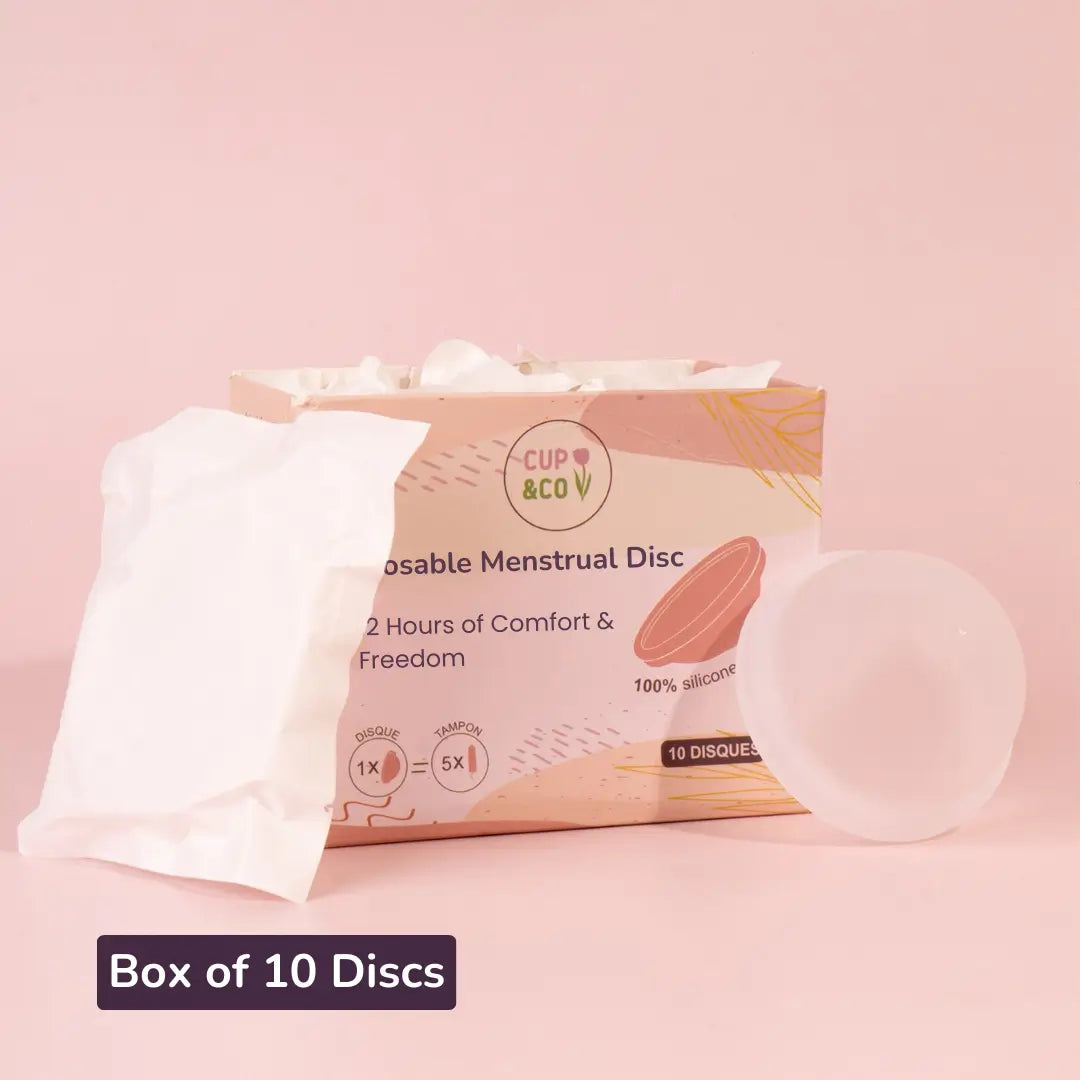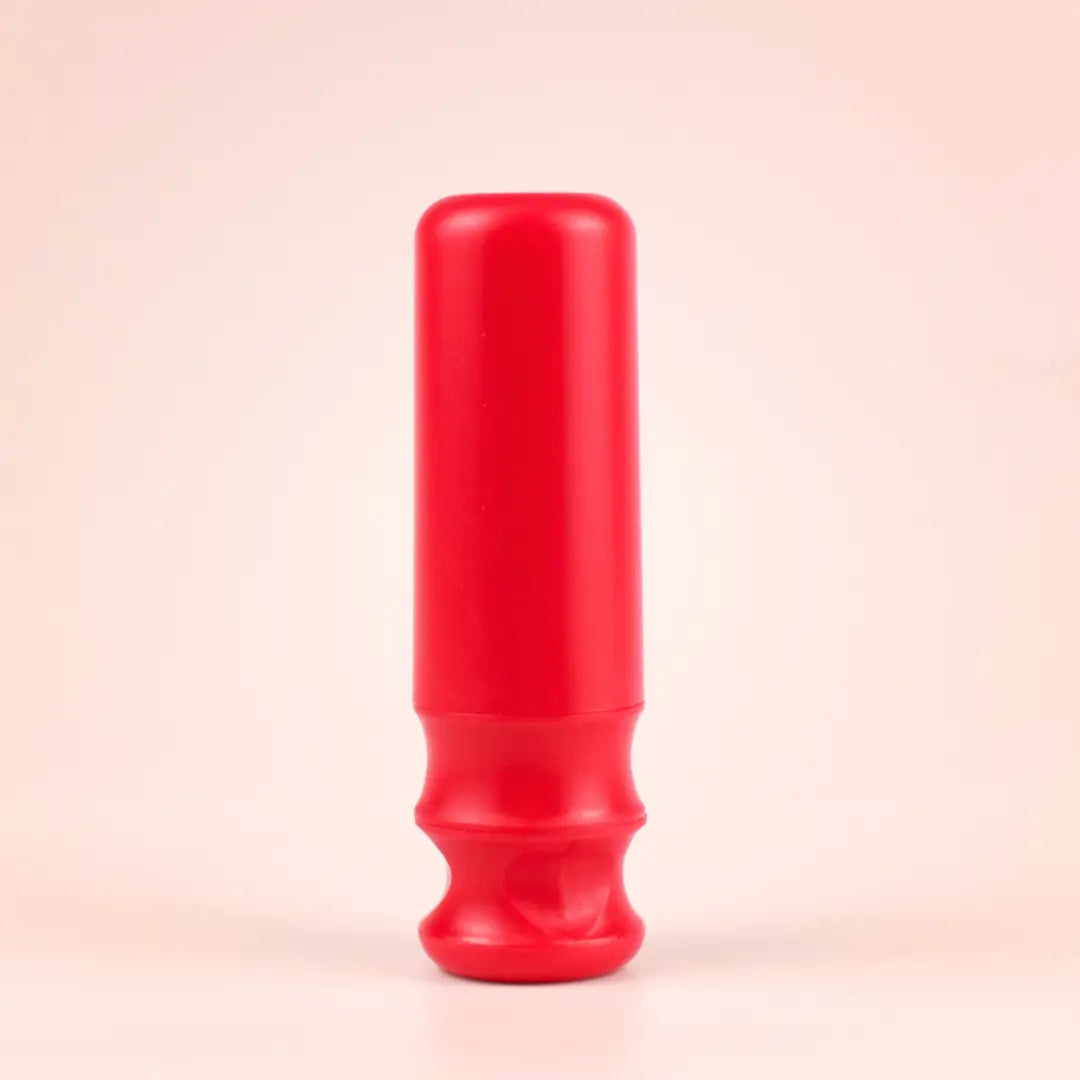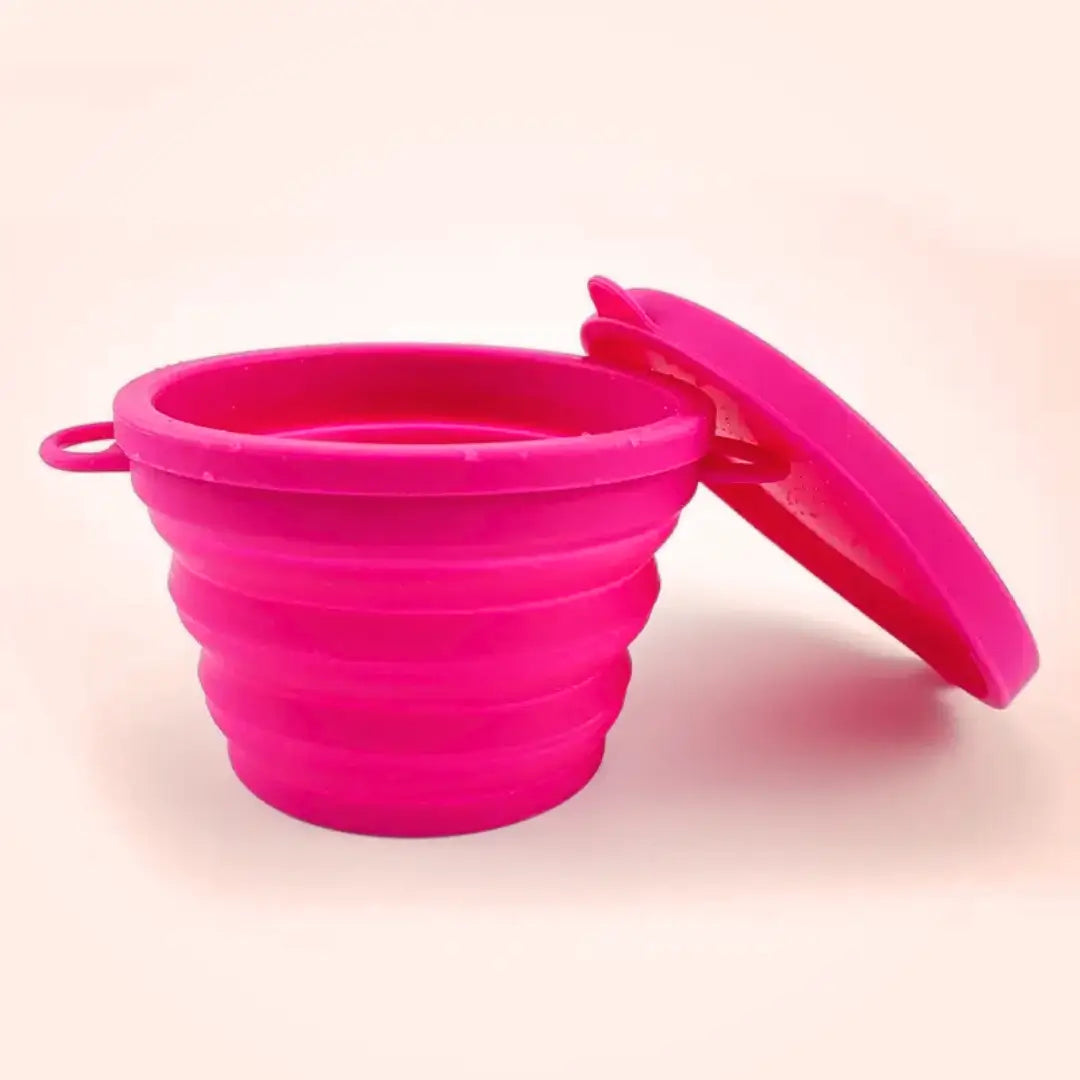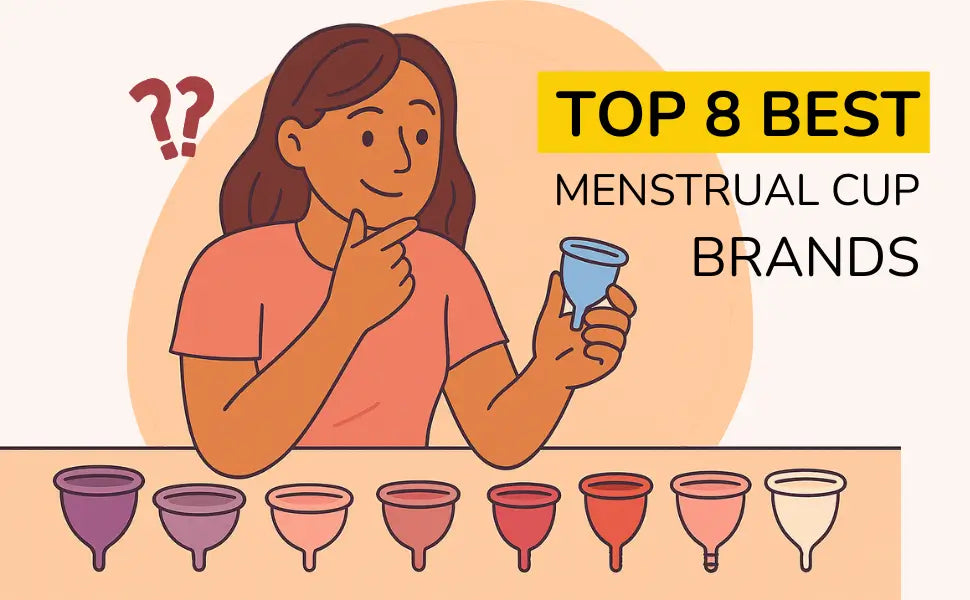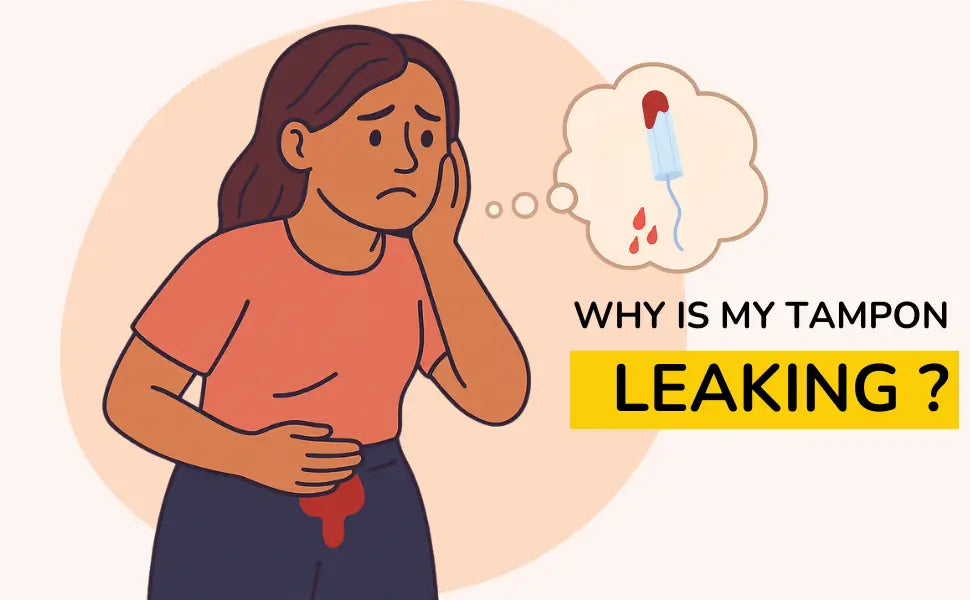Is using a menstrual cup compatible with having an IUD?
⚠️ Result: Using a menstrual cup with an IUD is not recommended.
Although they are not completely incompatible and many women use both without any issues, it's important to know that because of the suction effect and the risk of pulling on the IUD strings, a menstrual cup can increase the risk of IUD expulsion. ⚠️
If you want to use a menstrual cup while having an IUD, we highly recommend switching to a menstrual disc instead.
The disc is very similar to a cup but without the risk of dislodging your IUD.
We'll explain everything you need to know about using a menstrual cup with an IUD and why switching to a disc might be a safer option.
The Two Types of Intrauterine Devices (IUDs)
An IUD is a highly effective form of birth control used to prevent pregnancy.
There are two types of IUDs: copper and hormonal. Both are T-shaped and are placed inside the uterus. The main difference lies in how they work.
Copper IUD
This type of IUD inactivates sperm and causes inflammation inside the uterus to prevent fertilization.
It often leads to heavier and longer periods.
Hormonal IUD
This IUD releases hormones like levonorgestrel, which thicken the cervical mucus inside the uterus, blocking sperm from reaching an egg.
It can also make your periods lighter or even stop them altogether.
Do Menstrual Cups Increase the Risk of IUD Expulsion?
In recent years, more and more information has emerged showing that menstrual cups can increase the risk of displacing an IUD. This is considered one of the six risks associated with using a menstrual cup.
Scientific Studies on Menstrual Cups and IUD Use
Several studies have been conducted on this topic, but one of the most important comes from the American College of Obstetricians and Gynecologists (ACOG) in 2020. In this study, around 1,100 women participated in a three-year clinical trial with regular follow-ups. Among them, 266 used a menstrual cup. After nine months, researchers changed the study protocol to recommend against using a cup with an IUD due to the high number of expulsions.
After one year, 14% of menstrual cup users experienced IUD expulsion, compared to just 5% of non-users. After two years, the expulsion rate rose to 23% for cup users versus 6.5% for non-users. About half of the cup users reported their IUD being expelled while removing their menstrual cup.
Another study by Thouret, conducted as part of a medical thesis in 2018, also showed that one year after IUD insertion, women using menstrual cups were more likely to experience IUD expulsion than those who did not use them.
These studies clearly show that, several months after IUD placement, using a menstrual cup can significantly increase the risk of IUD displacement compared to other menstrual products.
Feedback from Users and Gynecologists
We've received many messages from users who lost their IUD after using a menstrual cup. They asked if our menstrual disc could be a safer alternative for those with an IUD.
To provide reliable answers, we consulted with midwives and gynecologists.
Read more user reviews about the menstrual cup.
We found that most healthcare professionals confirm that menstrual cups can increase the risk of IUD expulsion.
This risk is mainly caused by the suction effect created when removing the cup, especially if done too quickly or forcefully. There is also a higher chance of accidentally pulling on the IUD strings when removing a menstrual cup compared to other menstrual products.
We also discussed the use of menstrual discs with an IUD. According to gynecologists, menstrual discs, because of their flatter shape and different mechanism, are generally considered a safer and more compatible option for people with an IUD compared to menstrual cups.
👉 You can find all the details about using a menstrual disc with an IUD in this article.
How Can a Menstrual Cup Cause IUD Displacement?
Thanks to a combination of user testimonials, studies, and analysis of how menstrual cups work, we now better understand how a menstrual cup can cause an IUD to be expelled.
As shown in the 2020 study, IUD expulsion usually does not occur in the first few months after insertion but rather 1 to 2 years later. And in most cases, expulsion happens during the removal of the menstrual cup.
Here are the main factors that could increase the risk of IUD expulsion:
-
The suction effect: While the suction created by the cup is usually not strong enough to immediately expel an IUD, especially during the first few uses, it can gradually shift it over time. If the menstrual cup is removed too quickly or forcefully, these small shifts can eventually lead to IUD expulsion through natural uterine contractions.
- Pulling on the IUD strings: This scenario is more common and often leads to immediate expulsion. If the IUD strings are too long, they can get caught in the rim of the menstrual cup during removal or become trapped between the vaginal wall and the cup. Accidentally pulling on these strings while removing the cup can dislodge and expel the IUD at the same time.
How to Remove a Menstrual Cup with an IUD?

Removing your menstrual cup safely is important to lower the risk of displacing your IUD. Here's the step-by-step guide:
-
Push down using your pelvic floor muscles (like when you're trying to pee or have a bowel movement). This will help move the cup lower in your vaginal canal.
-
Pinch the base of the menstrual cup with clean fingers to release the suction seal.
-
Slowly pull on the stem of the cup to remove it gently.
-
Empty and rinse your menstrual cup before reinserting it or storing it.
By following these steps, you can reduce the risk of moving or dislodging your IUD.
However, keep in mind that using a menstrual cup still carries a slightly higher risk compared to other period products.
Check out our video guide on how to remove a menstrual cup.
We'll also share some additional tips below to help minimize the chance of losing your contraceptive device.
Precautions to Take When Using a Menstrual Cup with an IUD
Trim the Strings of Your IUD
When your IUD is inserted, you can ask your doctor to cut the strings shorter. If you already have an IUD, you can request your gynecologist or midwife to trim the strings during your next check-up.
Shorter strings lower the chance of them getting caught on your menstrual cup, reducing the risk of shifting or expelling your IUD.
Be Careful If You Have a Low Cervix
If your cervix sits lower during your period, we recommend avoiding the use of a menstrual cup, especially if you have an IUD.
Here's why using a menstrual cup with a low cervix can be risky:
-
Limited Space: If your cervix is too low, your cup might not fit properly inside your body. This can cause discomfort and leaks.
-
Easier Access to the Strings: With a lower cervix, your IUD strings will also sit lower, making them easier to accidentally pull with your cup or fingers. It's better to leave some space between your menstrual cup and your cervix.
How to Know If You Have a Low Cervix
You can check your cervix height by gently inserting a clean finger into your vagina during your period:
If you can touch your cervix with just one knuckle (about 1,4 inches or less from the vaginal opening), you likely have a low cervix.

Check If Your IUD Is Still in Place
You can easily check if your IUD is still properly positioned by gently feeling for the strings coming from your cervix:
- If the strings feel the same length as before, everything is fine.
- If you can't feel the strings anymore or they feel much longer, your IUD may have shifted. In that case, consult your healthcare provider as soon as possible and use another form of contraception in the meantime.
What's the Best Period Protection to Use with an IUD?
If you're looking for an alternative to menstrual cups, a menstrual disc could be the best solution. This internal protection is very similar to a cup (reusable and body-safe), but it doesn't create suction and has a different shape that won't pull on your IUD strings. Doctors confirm there are no contraindications to using a menstrual disc with an IUD.
You can order our reusable menstrual disc and enjoy a 90-day trial.
Or you can also try our disposable menstrual discs, the perfect alternative to tampons.
Tampons generally carry less risk of dislodging an IUD compared to menstrual cups.
Otherwise, all other external protections like period underwear, disposable pads, etc., are also perfectly compatible with an IUD.
Instant IUD Expulsion: Causes and Precautions
It's important to know that no matter which period protection you use, there's always a small risk that your body might reject your IUD. This is called instant expulsion and it affects around 5% of users.
The main causes of expulsion are often linked to uterine contractions, but other factors like uterine fibroids (non-cancerous tumors) can also play a role. Plus, if you've experienced IUD expulsion in the past, your chances of it happening again are slightly higher.


